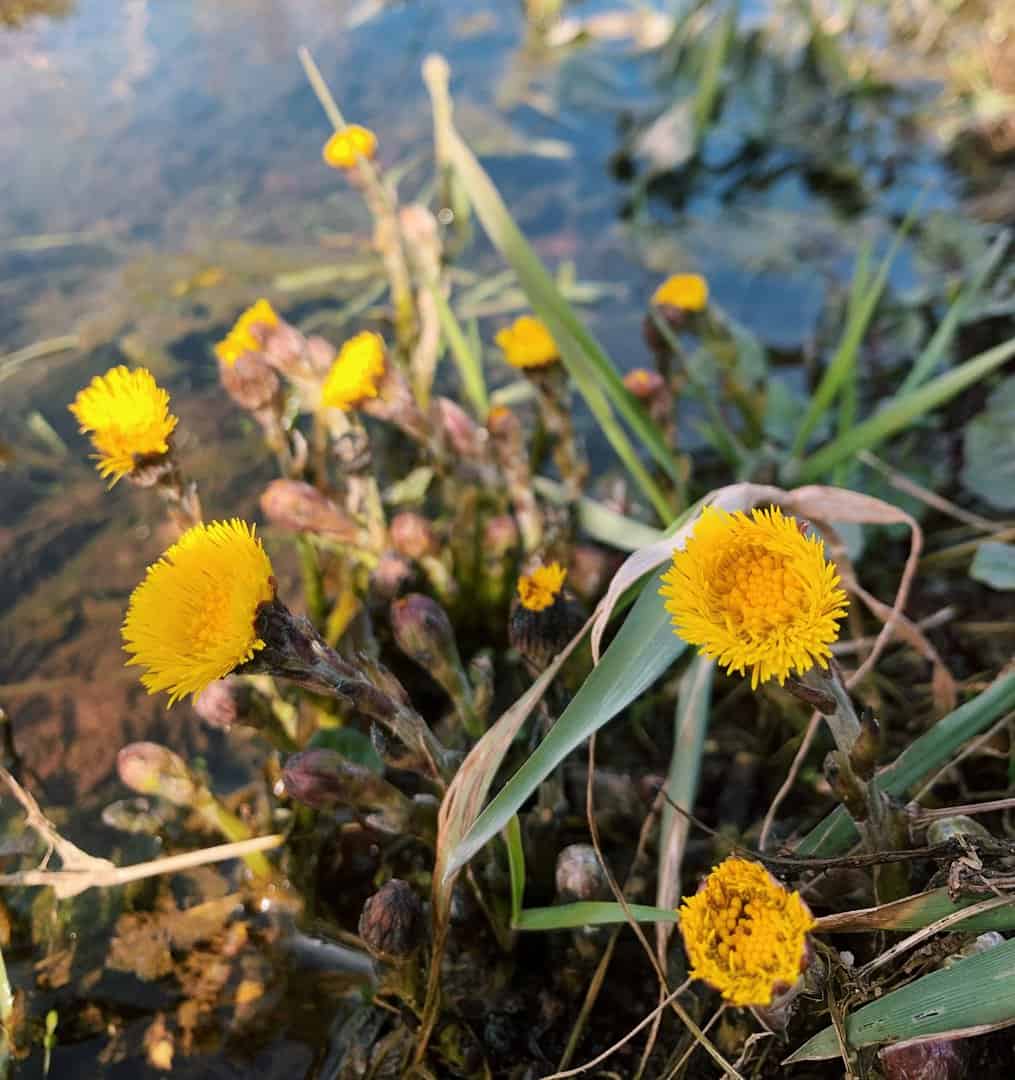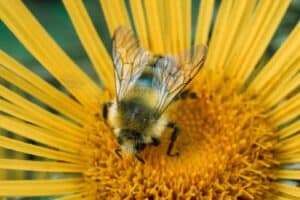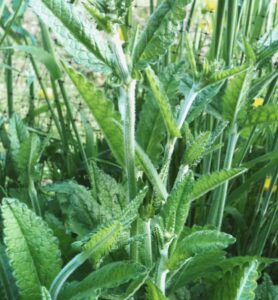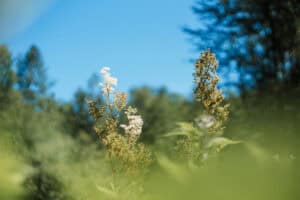Pyrrolizidine alkaloids are natural compounds found in certain herbs. Despite their long history of safe use in herbal traditions, they are often misunderstood and feared, discouraging people from working with these potent medicinal herbs.
By learning more about these compounds and how to safely use herbs containing them, you can confidently incorporate them into your herbal practice.
In today’s blog post, you’ll discover:
- What pyrrolizidine alkaloids are and why they’re named this
- The two types of pyrrolizidine alkaloids, distinguishing between toxic and non-toxic ones
- Notable herbs containing pyrrolizidine alkaloids and safe usage guidelines for each
- Safety precautions for utilizing any herb containing pyrrolizidine alkaloids
- Considerations when preparing herbal medicines using these herbs
Table of Contents
Herbs with pyrrolizidine alkaloids often get a bad reputation. But why? Often pinned as toxic, people hear this once and never want to work with them ever again. This is a shame since many of these herbs hold profound healing potential when used correctly. And that’s the keyword here: Used correctly.
By learning what pyrrolizidine alkaloids are, which plants contain them, how they can be harmful, and how to use them safely, you can gain the proficiency to work with them securely and confidently.
Let’s start with the basics. What are pyrrolizidine alkaloids? In plant chemistry, there’s a large group called alkaloids. This group is huge and includes alkaloids that are highly medicinal, some that are toxic, and some that are even deadly. There are over 650 different types of alkaloids, found in plants as mild as Dandelion (Taraxacum officinale) and as dangerous as Belladonna (Atropa belladonna). Pyrrolizidine alkaloids are just one kind among many, named for their molecular shape and structure.
One interesting thing about pyrrolizidine alkaloids is their bitter taste, which acts as a defense mechanism. This bitter flavor stops insects and animals from eating the plants because it tastes bad. Over 6,000 plants produce pyrrolizidine alkaloids, but herbalists work with only two plant families: Boraginaceae and Asteraceae. This means you only need to learn about a few specific plants, not thousands. That should already help you feel more relieved about working with these plants safely
When people learn an herb contains pyrrolizidine alkaloids, they often get spooked and think it’s too toxic to consume. However, you really only need to be cautious with those two specific plant families in herbal practices. Moreover, there are two types of pyrrolizidine alkaloids: saturated and unsaturated. One is toxic while the other is not.
Saturated pyrrolizidine alkaloids are non-toxic, and herbs containing these pyrrolizidine alkaloids are safe for both ingesting and applying on the skin. For example, Echinacea, a common herb, contains non-toxic saturated pyrrolizidine alkaloids and is safe to use as you would any other herb. I’ll say that again: Saturated pyrrolizidine alkaloids are non-toxic and cause no problems for the human body whatsoever.
On the other hand, unsaturated pyrrolizidine alkaloids are toxic. These alkaloids have a much more complex chemical structure than their saturated counterparts. Generally, the more complex the structure, the more toxic the compound. With unsaturated pyrrolizidine alkaloids, you need to be very careful, as some are potentially toxic and carcinogenic. Unsaturated pyrrolizidine alkaloids are divided into different subcategories, including simple pyrrolizidines, mono-esters, di-esters, and macrocyclic pyrrolizidine alkaloids.
Each category has increasing molecular complexity. For example, macrocyclic pyrrolizidine alkaloids are much more complex than simple pyrrolizidines. The more complex the structure, the higher the toxicity. Even simple pyrrolizidines are mildly toxic, but the concern arises with herbs containing macrocyclic pyrrolizidine alkaloids.
An interesting aspect of pyrrolizidine alkaloid pharmacodynamics is that these compounds are not inherently toxic. Your body makes them toxic in its attempt to metabolize them. When ingested, pyrrolizidine alkaloids pass through the gut wall, enter the portal circulation, and reach the liver. During phase 1 of liver detoxification, pyrrolizidine alkaloids transform into toxic pyrrolic compounds.
What does this toxicity look like? The toxic pyrroles produced in the liver from pyrrolizidine alkaloids can cause a condition called venous-occlusive disease (VOD), now renamed hepatic sinusoidal obstructive syndrome (HSOS). This condition occurs when the small blood vessels in the liver become blocked and stagnant due to damage to the proteins in the blood vessels, leading to scarring.
Eventually, these blood vessels become scar tissue, impairing the liver’s ability to function. This can cause hepatomegaly, or swelling of the liver, which may lead to hyperbilirubinemia—essentially jaundice, where bile salts are not processed properly and cause a yellow discoloration of the skin or the whites of the eyes. It can also lead to ascites, which is abdominal swelling. Ultimately, this can cause irreversible liver damage, which is both painful and very serious.
Venous occlusive disease can occur from prolonged low-dose exposure to certain pyrrolizidine alkaloids or severe high-dose exposure. The latter scenario happened historically when grain crops became contaminated with plants from the genus Senecio, which contain high concentrations of macrocyclic pyrrolizidine alkaloids—the most toxic form of pyrrolizidine alkaloids. Cases of VOD from taking herbs are rare in practice. However, VOD can only be diagnosed through a biopsy and is often misdiagnosed as hepatitis or cirrhosis while someone is still alive, so there may be more cases than currently recorded.
In summary, there are many types of pyrrolizidine alkaloids, with the two main categories being saturated and unsaturated. Within the unsaturated category, it’s mainly the macrocyclic pyrrolizidine alkaloids that you need to worry about. The di-esters and simple pyrrolizidine alkaloids are also toxic but to a lesser extent. In other words: Keep an eye out for plants with unsaturated pyrrolizidine alkaloids, especially when they are macrocyclic pyrrolizidine alkaloids.
This is one of those cases where understanding plant chemistry comes in handy, especially in medicine making. If you know what compounds a plant has you can choose the right method to extract what you want and leave behind what you don’t. Many alkaloids dissolve in water and a slightly acidic solution. So, to extract alkaloids effectively, you should test the pH of your extraction liquid. If it’s too alkaline, you can add a bit of vinegar to make it more acidic.
The challenge with preparing effective medicines from herbs with pyrrolizidine alkaloids is that you’ll also extract those unwanted toxic compounds. The good news is that pyrrolizidine alkaloids are not soluble in oil. This means you can prepare many external applications with these herbs without worrying about extracting these compounds. That’s why Comfrey-infused oil (Symphytum officinale) is so popular. You get all of the medicinal compounds without any of the toxic ones. To drive this point further, if you use Comfrey-infused oil (Symphytum officinale) on a broken bone, torn ligament, tendon, or an open wound, you won’t absorb any pyrrolizidine alkaloids through the skin because they aren’t extracted in the oil.
However, if you make a strong Comfrey (Symphytum officinale) tea and apply it to your skin, the tea will contain pyrrolizidine alkaloids because they are extracted in water. You can absorb some of these alkaloids through your skin, but typically not enough to cause serious problems.
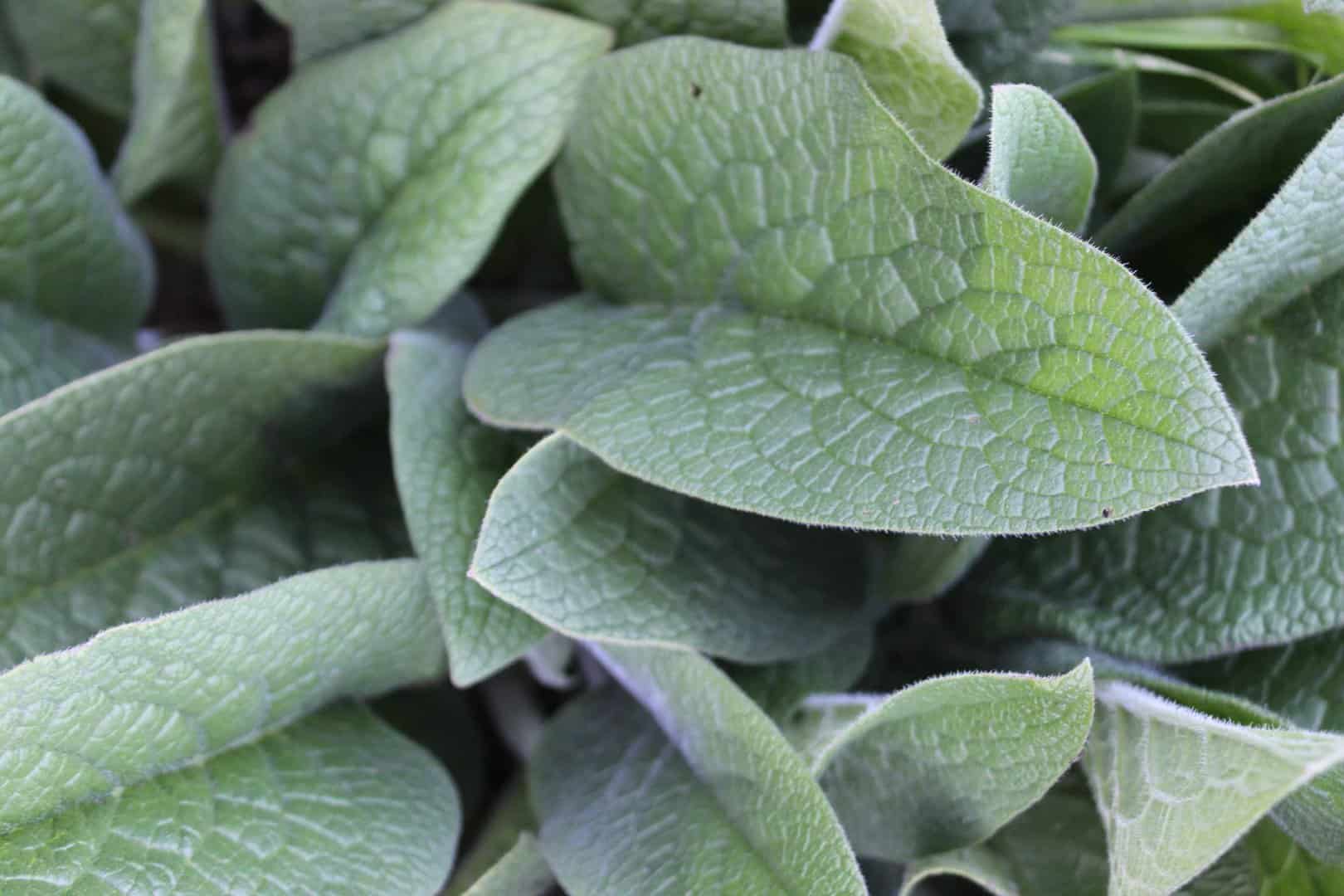
Materia Medica
Let’s review the materia medica of herbs containing pyrrolizidine alkaloids and distinguish between those on the safer and more serious sides.
Herb: Western Coltsfoot, also known as Butterbur (Petasites hydridus)
This is a common herb in the supplement industry, often sold as a standardized extract for treating migraine headaches. These extracts are typically formulated to be free of pyrrolizidine alkaloids because companies remove these compounds after production. This is crucial because Butterbur is rich in unsaturated pyrrolizidine alkaloids and should not be taken internally. People sometimes see Butterbur on the market and mistakenly think they can use it at home, such as for a cough remedy because they see this herb in other supplements. However, these extracts would be toxic if companies didn’t remove the pyrrolizidine alkaloids.
Pyrrolizidine alkaloid type: Unsaturated (toxic)
Safety level: Do not ingest for any extended period.
Herb: Coltsfoot (Tussilago farfara)
Coltsfoot has been a staple in European and Western herbal medicine for its effectiveness in treating respiratory tract issues. It is known for its antitussive properties, meaning it helps to suppress a cough, making it particularly useful for calming excessive coughing. I consider it a mild demulcent expectorant, ideal for soothing an irritated cough with a ticklish sensation in the throat and chest that triggers coughing. Coltsfoot pairs well with Mullein leaf (Verbascum thapsus), Wild Cherry Bark (Prunus serotina), and Licorice (Glycyrrhiza glabra).
Given its specific use, Coltsfoot is unlikely to be used for an extended period since most irritating coughs are short-lived. Regardless, Coltsfoot should only be taken for a short duration and in small amounts because it contains macrocyclic pyrrolizidine alkaloids.
Pyrrolizidine alkaloid type: Unsaturated (toxic) and saturated (non-toxic)
Safety level: Only ingest in small doses and for a short period of time.
Herb: Comfrey (Symphytum officinale)
Comfrey is one of the most well-known herbs for its healing properties and its controversy due to its pyrrolizidine alkaloids. It’s the most important remedy for broken bones, sprains, strains, torn ligaments, strengthening bones, and healing wounds. While many avoid taking Comfrey internally due to its pyrrolizidine alkaloid content, traditional use of Comfrey was widespread until it was analyzed and the presence of pyrrolizidine alkaloids was discovered.
Pyrrolizidine alkaloid type: Unsaturated (toxic), specifically mono-esters and di-esters, which have mild to moderate toxicity
Safety level: There are several different things to know about Comfrey to use it safely. Firstly, the demulcent roots and leaves of Comfrey can be used interchangeably medicinally, with the roots more concentrated than the leaves with pyrrolizidine alkaloids.
From most to least concentrated in pyrrolizidine alkaloids, the root contains the most, the young leaves next, and the mature leaves the lowest levels. There are several species of Comfrey, with varying levels of pyrrolizidine alkaloids. The main one used in Western herbalism (Symphytum officinale) contains the lowest amounts compared to any other Comfrey variety. For example, Russian Comfrey (Symphytum × uplandicum) has higher levels of pyrrolizidine alkaloids, so if using it, only use the older leaves for a short term.
It’s unfortunate that there’s so much misunderstanding surrounding Comfrey because it’s a profoundly healing herb for gut issues, such as ulcers, duodenal ulcers, and intestinal permeability or leaky gut. It promotes wound healing and reduces inflammation, and its demulcent properties help soothe heat and irritation in the gut.
Comfrey can be safely used in the right circumstances or applied in smaller amounts in a formula for a short period to aid in the healing of digestive issues. However, there are other herbs with similar properties that do not contain pyrrolizidine alkaloids, such as Calendula (Calendula officinalis), Plantain (Plantago lanceolata), Yarrow (Achillea millefolium), Marshmallow (Althaea officinalis), and Slippery Elm (Ulmus fulva). If Comfrey is used, it’s important to ensure the person does not have any liver issues that could make them more vulnerable to harm from pyrrolizidine alkaloids. Even then, use small amounts, take breaks, and use for a short time.
Herb: Borage (Borago officinalis)
Borage, commonly used in England and Ireland, is considered a nervine relaxant and is believed to help with burnout exhaustion. It is often used for menopausal symptoms and falls into the nervine trophorestorative category. With a long history of traditional use, Borage contains only low concentrations of the moderately toxic pyrrolizidine alkaloids (PAs).
Pyrrolizidine alkaloid type: Unsaturated (toxic), mild-to-moderate toxicity
Safety level: The best way to use Borage is in a formula with other herbs, in small amounts, and for short-term use with breaks. This approach helps give your liver a rest and prevents the accumulation of PAs in your system.
Herb: Boneset (Eupatorium perfoliatum)
A major remedy in North American herbalism, Boneset is essential for treating febrile conditions as an immunostimulant. It is primarily used for fevers accompanied by deep muscle and bone aches, making it beneficial for influenza, dengue fever, and other similar conditions. Boneset also possesses expectorant, immunostimulant, antiviral, and antibacterial properties.
Pyrrolizidine alkaloid type: Unsaturated (toxic), mild-to-moderate toxicity
Safety level: Boneset is considered an acute herb for acute situations, not a long-term nutritive tonic, and should be used for short periods. For its diaphoretic effect (promoting sweating), drink it as a tea, which may extract some pyrrolizidine alkaloids. However, since most fevers are short-lived, drinking 2-3 cups of Boneset tea, especially when combined with other diaphoretic herbs like Elderflower, Yarrow, Peppermint, or Pleurisy Root, for a week or two at most should not be a cause for concern. Using Boneset in smaller amounts, such as 0.5 tsp per 8 oz of water for an infusion, is considered safe for short-term use.
Herb: Gravelroot (Eupatorium purpureum)
A cousin of Boneset (Eupatorium perfoliatum), Gravelroot is utilized for urinary tract issues, particularly to alleviate pain associated with kidney stones or urinary calculi. It’s an effective diuretic, great at flushing the urinary system, and acts as an analgesic (pain reliever) by dilating the ureters to help expel stones. Gravelroot also helps eliminate mineral deposits from the joints, making it beneficial for arthritic pain caused by the accumulation and deposition of metabolic waste products and minerals in the joints.
Pyrrolizidine alkaloid type: Unsaturated (toxic), mild-to-moderate toxicity
Safety level: Safe for short-term use, Gravelroot, like many other plants containing pyrrolizidine alkaloids, does not have an indication for long-term use. However, there is no need for excessive caution as it only contains milder pyrrolizidine alkaloids in lower concentrations, making it suitable for short-term use.
Herb: Echinacea (Echinacea purpurea) and (Echinacea angustifolia)
Probably one of our most known herbs in the materia medica, Echinacea is known for its immune-boosting properties but actually has traditional indications for cleansing toxic blood patterns. It contains pyrrolizidine alkaloids, but only the non-toxic type, making it completely safe to use.
Pyrrolizidine alkaloids type: Saturated (non-toxic)
Safety: No safety concerns associated with the pyrrolizidine alkaloids present.
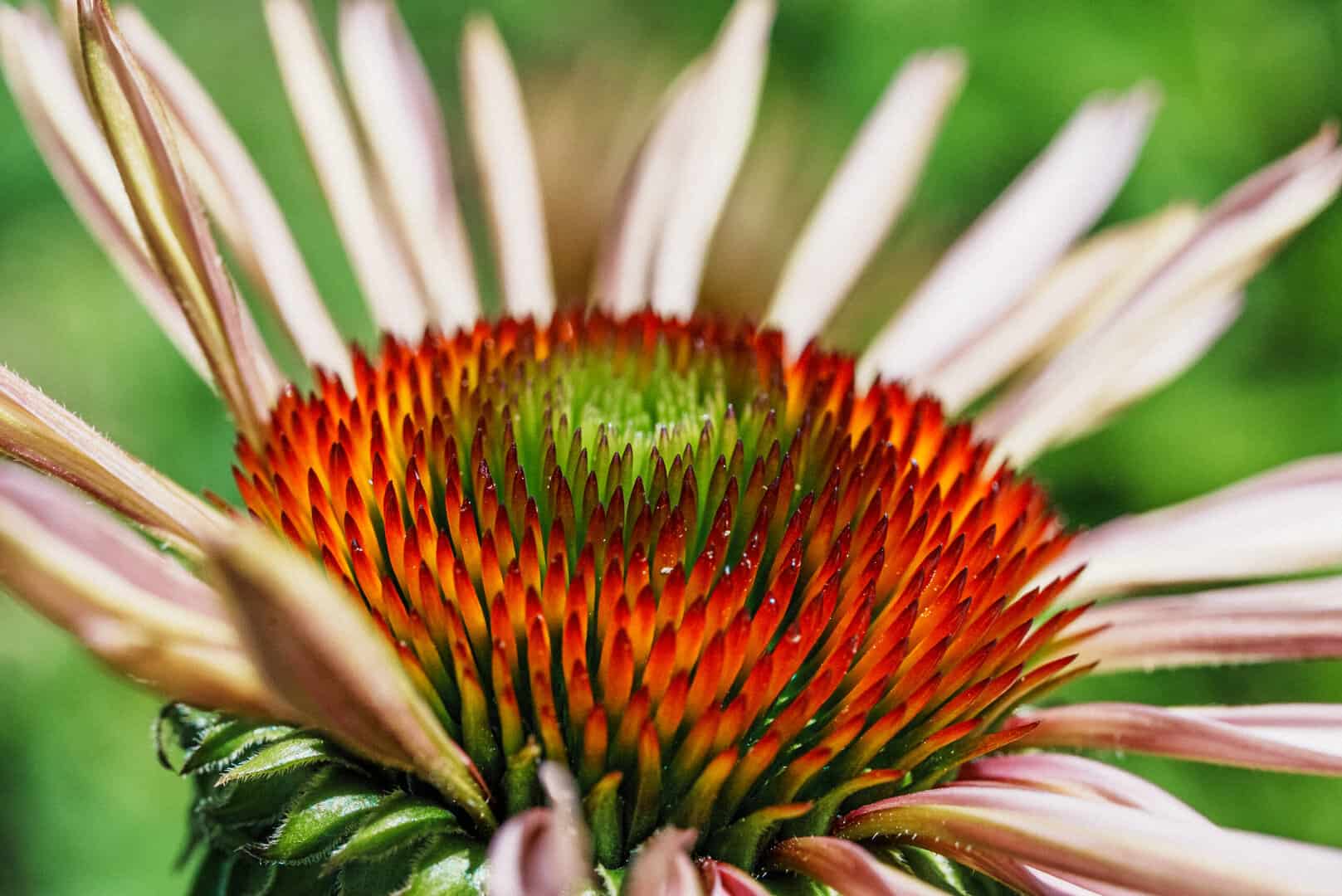
Key Safety Takeaways
My general recommendation for using herbs containing pyrrolizidine alkaloids is to be cautious but not paranoid. And while these herbs can be incredibly useful, there are certain precautions I think everyone should follow to use these herbs safely.
- Never use during pregnancy, lactation, or in children: Pyrrolizidine alkaloids are too toxic for infants and children, as their livers cannot metabolize these compounds. Not only should you never give herbs with pyrrolizidine alkaloids to children and babies, but you also shouldn’t give it to someone pregnant or breastfeeding as these compounds can transfer over indirectly to the baby. Always look for children-friendly alternative herbs that accomplish what you were hoping for with herbs containing pyrrolizidine alkaloids, such as Peppermint (Mentha piperita) or Elderflower (Sambucus spp) for a fever instead of Boneset (Eupatorium perfoliatum).
- Never use in individuals with liver damage or pathology: Pyrrolizidine alkaloids can cause liver damage even in healthy people without liver problems, so you definitely should not use them at all in people with liver damage or pathology.
- Only administer short-term and in a low dosage: For healthy adults without liver disharmony patterns, you can use herbs with pyrrolizidine alkaloids internally, but only for short periods and in low doses. Limit use to no more than two weeks in moderate to small doses, practicing extra caution with herbs containing macrocyclic pyrrolizidine alkaloids.
- Research herb-drug interactions: Researching herb-drug interactions is always the best practice, but it’s especially critical when working with herbs containing pyrrolizidine alkaloids. Some herbs slow down phase-two liver detoxification or amplify phase-one liver detoxification. This is important to know since it’s phase-2 liver detoxification that detoxifies those toxic pyrrolizidine alkaloids and makes them less toxic. If you’re taking a medication or supplement that slows down phase two, you’re increasing the amounts of these toxic metabolites in the system, which is dangerous. So be aware of herbs, drugs, and supplements that affect the different liver detoxification phases.
To put things in perspective, there are few reported cases of liver toxicity from medicinal plants containing pyrrolizidine alkaloids when used under the guidance of an herbalist or by individuals themselves. In contrast, there are millions of recorded cases of liver toxicity from common medications like acetaminophen and over-the-counter non-steroidal anti-inflammatory drugs (NSAIDs).
If you come across articles that make you feel afraid to use plants containing pyrrolizidine alkaloids, remember to check if the research is credible and trustworthy. You can do this by verifying if the correct plant was used, whether it was adulterated, the duration and dosage used, and other factors that can skew results.
David Winston, a respected herbalist and personal mentor, recommends not consuming these herbs for more than 1 week at a time, and no more than 4 weeks per year. The German government also advises against using Coltsfoot (Tussilago farfara) for more than 26 days per year in total. These guidelines can help you understand how to use these herbs safely.
This is a really important topic that often gets swept under the rug, so I hope this helped you develop a much deeper understanding of what pyrrolizidine alkaloids are, how they work, why they’re toxic, and how you can navigate medicinal herbs that contain them safely and responsibly to help the people in your care feel stronger and better.
